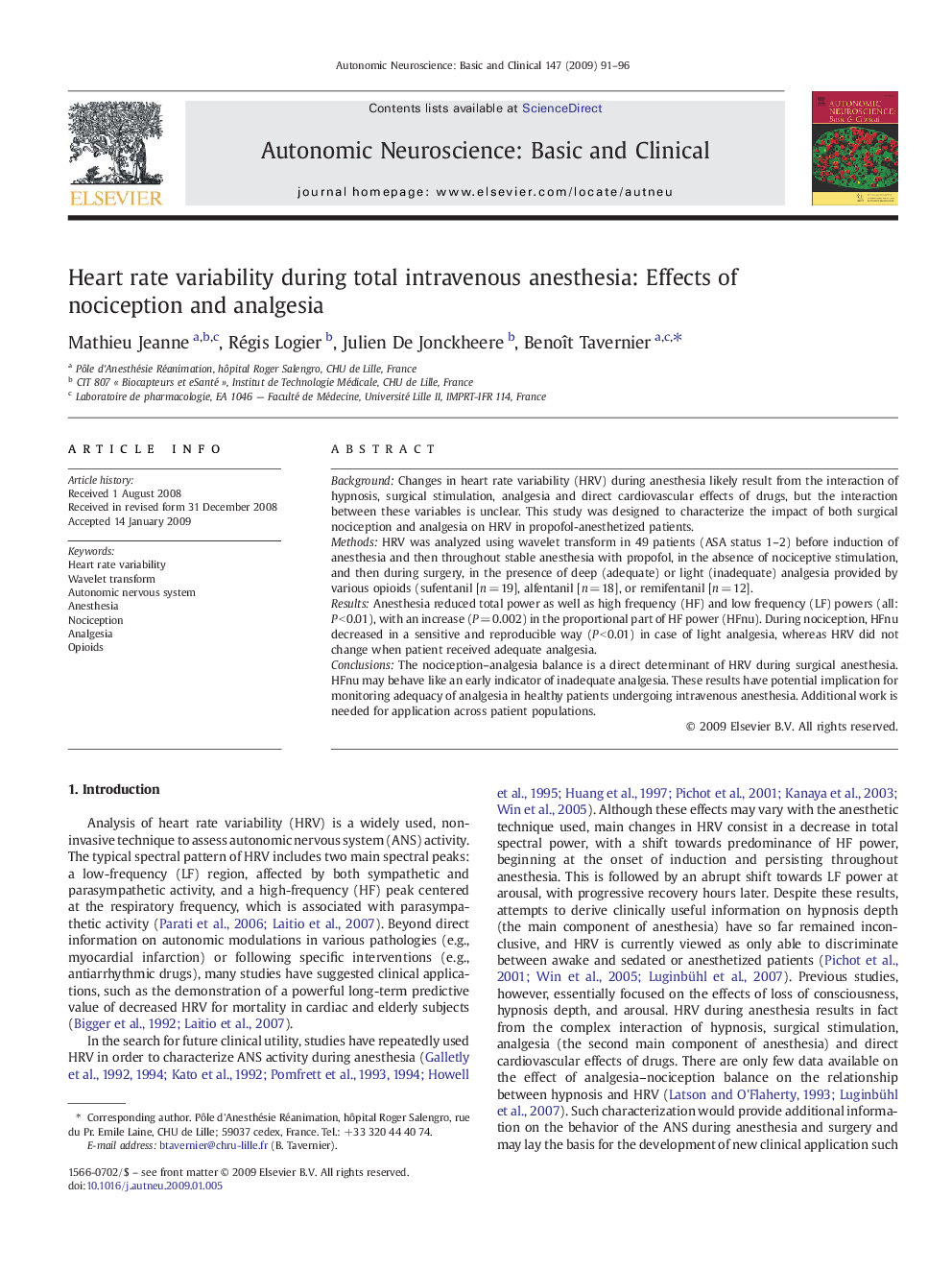| Article ID | Journal | Published Year | Pages | File Type |
|---|---|---|---|---|
| 3035392 | Autonomic Neuroscience | 2009 | 6 Pages |
BackgroundChanges in heart rate variability (HRV) during anesthesia likely result from the interaction of hypnosis, surgical stimulation, analgesia and direct cardiovascular effects of drugs, but the interaction between these variables is unclear. This study was designed to characterize the impact of both surgical nociception and analgesia on HRV in propofol-anesthetized patients.MethodsHRV was analyzed using wavelet transform in 49 patients (ASA status 1–2) before induction of anesthesia and then throughout stable anesthesia with propofol, in the absence of nociceptive stimulation, and then during surgery, in the presence of deep (adequate) or light (inadequate) analgesia provided by various opioids (sufentanil [n = 19], alfentanil [n = 18], or remifentanil [n = 12].ResultsAnesthesia reduced total power as well as high frequency (HF) and low frequency (LF) powers (all: P < 0.01), with an increase (P = 0.002) in the proportional part of HF power (HFnu). During nociception, HFnu decreased in a sensitive and reproducible way (P < 0.01) in case of light analgesia, whereas HRV did not change when patient received adequate analgesia.ConclusionsThe nociception–analgesia balance is a direct determinant of HRV during surgical anesthesia. HFnu may behave like an early indicator of inadequate analgesia. These results have potential implication for monitoring adequacy of analgesia in healthy patients undergoing intravenous anesthesia. Additional work is needed for application across patient populations.
